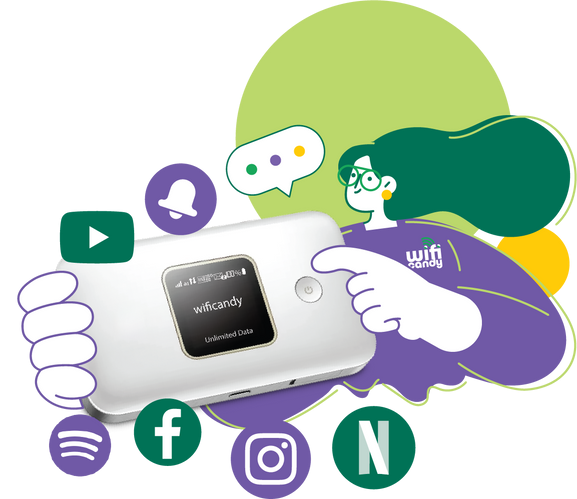Your Guide to Data Usage
In the hyper-connected world of today, our smartphone is the computer that powers everything we do - from work to entertainment and everything in between. All of this apparent-wizardry is enabled by wireless service and the endless bytes of data that flow through our mobile operator’s network.
Of course, we pay for the transmission of these bytes through the data allowance on our wireless plans. But those of us who haven’t yet experienced the privilege of an unlimited data allowance or travel abroad frequently will empathise with the dreaded fear of waking up to an extortionate wireless bill riddled with overages.
In this article, we’ll help you to gain a better understanding of data usage on your smartphone by examining the requirements of some of the most popular applications and services available today.
Firstly, it is important to note that the quantity of time that we spend on our smartphones is not directly proportional to the volume of data consumed. The usage requirements of different applications vary wildly.
Social Media: Images and videos contribute to higher data consumption.

The proliferation of social networks and instant messaging applications has fundamentally transformed the way we communicate. Everything and everyone can now connect everywhere and anytime at the touch of a finger.
As these services continue to advance, so too does their data consumption requirements. Facebook, Instagram and Twitter, for example, now enable auto-play for video content by default. This seemingly trivial feature represents a major contributor to higher data usage.
If you use a social media application for at least an hour every day, particularly those with a lot of video content such as the above and others including TikTok and Snapchat, expect data usage to top 3GB monthly.
Messaging applications such as WhatsApp and Facebook Messenger will use significantly less data, as low as 1MB per hour, provided you are not sending and receiving images, voice or video.
Entertainment: Streaming is a killer.

On-demand content and music from streaming services such as Netflix and Spotify occupy an ever-increasing proportion of our lives. This trend will only continue as more companies join in on the streaming bonanza with new additions including Disney+ and Apple TV+.
Video content accounts for the largest proportion of network traffic today. Streaming in Full High Definition (FHD - 1080p) will consume more than 1.5GB per hour, while Quad High Definition (QHD - 1440p) will consume more than 2.7GB per hour. Music streaming, meanwhile, will consume 72MB per hour on “normal quality”.







